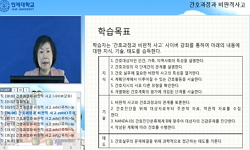This paper discussed that the sentence constructed with the formal verb doe-da and ji-da is passive. is summarized as follows: In this paper, the passive sentence is defined that (ⅰ) seman tically, it has passive meaning, (ⅱ) syntactically, it ...
http://chineseinput.net/에서 pinyin(병음)방식으로 중국어를 변환할 수 있습니다.
변환된 중국어를 복사하여 사용하시면 됩니다.
- 中文 을 입력하시려면 zhongwen을 입력하시고 space를누르시면됩니다.
- 北京 을 입력하시려면 beijing을 입력하시고 space를 누르시면 됩니다.
https://www.riss.kr/link?id=A104071338
-
저자
최규수 (부산대학교)
- 발행기관
- 학술지명
- 권호사항
-
발행연도
2005
-
작성언어
-
-
주제어
피동사 ; 피동문 ; 사동 타동사 ; 과정 ; 사동의 피동. ; passive ; causative ; process ; causative-transitive ; non-causative-transitive. ; passive ; causative ; process ; causative-transitive ; non-causative-transitive.
-
등재정보
KCI등재
-
자료형태
학술저널
- 발행기관 URL
-
수록면
101-134(34쪽)
-
KCI 피인용횟수
17
- 제공처
- 소장기관
-
0
상세조회 -
0
다운로드
부가정보
다국어 초록 (Multilingual Abstract)
In this paper, the passive sentence is defined that (ⅰ) seman tically, it has passive meaning, (ⅱ) syntactically, it is intransitive sentence as (1a) corresponding to transitive sentence as (1b).
(1) a. NP2-ga (NP1-ege) V2
b. NP1-ga NP2-lïl V1
The passive sentence constructed with V-ge doe-da corres ponds to the causative-transitive sentence constructed V-ge doe- da. The passive sentence constructed with V-e ji-da corresponds to the causative-transitive sentence constructed V-ge doe-da or non-causative-transitive sentence.
The types of passive verb in Korean Language.
(2) Types of passive verbs
morphologyical derivative V-{hi, …}da
compound N-doeda, N-danghada, N-batda; V-e-jida
syntactic V-ge doeda, V-e jida
The passive voice is process[+dynamic, -controlled], expresses many events which express process occurs beyond human's power. Therefore, compared with the active voice, the passive voice expresses events in which action is weakened or lost on the one hand, events in which automaticity or naturalness is strengthened on the other hand, especially the passive constru cted with the formal verb doe-da and ji-da still more does so.
This paper discussed that the sentence constructed with the formal verb doe-da and ji-da is passive. is summarized as follows:
In this paper, the passive sentence is defined that (ⅰ) seman tically, it has passive meaning, (ⅱ) syntactically, it is intransitive sentence as (1a) corresponding to transitive sentence as (1b).
(1) a. NP2-ga (NP1-ege) V2
b. NP1-ga NP2-lïl V1
The passive sentence constructed with V-ge doe-da corres ponds to the causative-transitive sentence constructed V-ge doe- da. The passive sentence constructed with V-e ji-da corresponds to the causative-transitive sentence constructed V-ge doe-da or non-causative-transitive sentence.
The types of passive verb in Korean Language.
(2) Types of passive verbs
morphologyical derivative V-{hi, …}da
compound N-doeda, N-danghada, N-batda; V-e-jida
syntactic V-ge doeda, V-e jida
The passive voice is process[+dynamic, -controlled], expresses many events which express process occurs beyond human's power. Therefore, compared with the active voice, the passive voice expresses events in which action is weakened or lost on the one hand, events in which automaticity or naturalness is strengthened on the other hand, especially the passive constru cted with the formal verb doe-da and ji-da still more does so.
참고문헌 (Reference)
1 이 기동, "조동사 ‘지다’의 의미 연구" 한글 학회 161 : 29-61, 1978
2 최 규수, "입음월의 기능과 구조" 우리말 연구회 1 : 235-258, 1991
3 이 정택, "이 정택 피동성 표현에 관한 연구 ‘되다 받다당하다’를 대상으로" 한글 학회 143-166, 2001ㄱ
4 우 인혜, "우리말 피동 연구" 한국문화사 1997
5 이 정택, "용언 ‘되다’와 피동법" 한글 학회 218 : 139-166, 1992
6 "시점과 풀이씨의 태" 1988
7 이 정택, "능동주 표지의 본질과 피동의 범주화" 한글 학회 262 : 149-169, 2003
8 김 차균, "국어의 수동과 사역의 의미" 한글 학회 1980
9 이 정택, "국어 피동에 관한 역사적 연구-접미사 피동과 ‘?외다 피동을 대상으로-" 한글 학회 93-118, 2001ㄴ
10 배 희임, "국어 피동 연구" 고려대학교 민족문화연구소 1988
1 이 기동, "조동사 ‘지다’의 의미 연구" 한글 학회 161 : 29-61, 1978
2 최 규수, "입음월의 기능과 구조" 우리말 연구회 1 : 235-258, 1991
3 이 정택, "이 정택 피동성 표현에 관한 연구 ‘되다 받다당하다’를 대상으로" 한글 학회 143-166, 2001ㄱ
4 우 인혜, "우리말 피동 연구" 한국문화사 1997
5 이 정택, "용언 ‘되다’와 피동법" 한글 학회 218 : 139-166, 1992
6 "시점과 풀이씨의 태" 1988
7 이 정택, "능동주 표지의 본질과 피동의 범주화" 한글 학회 262 : 149-169, 2003
8 김 차균, "국어의 수동과 사역의 의미" 한글 학회 1980
9 이 정택, "국어 피동에 관한 역사적 연구-접미사 피동과 ‘?외다 피동을 대상으로-" 한글 학회 93-118, 2001ㄴ
10 배 희임, "국어 피동 연구" 고려대학교 민족문화연구소 1988
11 강 명순, "국어 사?피동법의 역사적 변화 방향 및 그 원인에 관한 새로운 고찰" 한글 학회 254 : 119-160, 2001
12 "국어 간접 피동에 대하여 피동 조동사 ‘지다’를 중심으로 문법 연구 3" 탑출판사 159-182, 1978
동일학술지(권/호) 다른 논문
-
- 한글학회
- 이강로
- 2005
- KCI등재
-
- 한글학회
- 송기형
- 2005
- KCI등재
-
한국어 음절 말 폐쇄음에 대한 음향 및 청각 음성학적 연구
- 한글학회
- 양순임
- 2005
- KCI등재
-
- 한글학회
- 문순덕
- 2005
- KCI등재
분석정보
인용정보 인용지수 설명보기
학술지 이력
| 연월일 | 이력구분 | 이력상세 | 등재구분 |
|---|---|---|---|
| 2027 | 평가예정 | 재인증평가 신청대상 (재인증) | |
| 2021-01-01 | 평가 | 등재학술지 유지 (재인증) |  |
| 2018-01-01 | 평가 | 등재학술지 유지 (등재유지) |  |
| 2015-01-01 | 평가 | 등재학술지 유지 (등재유지) |  |
| 2011-01-01 | 평가 | 등재학술지 유지 (등재유지) |  |
| 2009-01-01 | 평가 | 등재학술지 유지 (등재유지) |  |
| 2007-01-01 | 평가 | 등재학술지 유지 (등재유지) |  |
| 2004-01-01 | 평가 | 등재학술지 선정 (등재후보2차) |  |
| 2003-01-01 | 평가 | 등재후보 1차 PASS (등재후보1차) |  |
| 2002-01-01 | 평가 | 등재후보 1차 FAIL (등재후보1차) |  |
| 1998-07-01 | 평가 | 등재후보학술지 선정 (신규평가) |  |
학술지 인용정보
| 기준연도 | WOS-KCI 통합IF(2년) | KCIF(2년) | KCIF(3년) |
|---|---|---|---|
| 2016 | 0.84 | 0.84 | 0.77 |
| KCIF(4년) | KCIF(5년) | 중심성지수(3년) | 즉시성지수 |
| 0.87 | 0.83 | 1.332 | 0.3 |




 DBpia
DBpia







